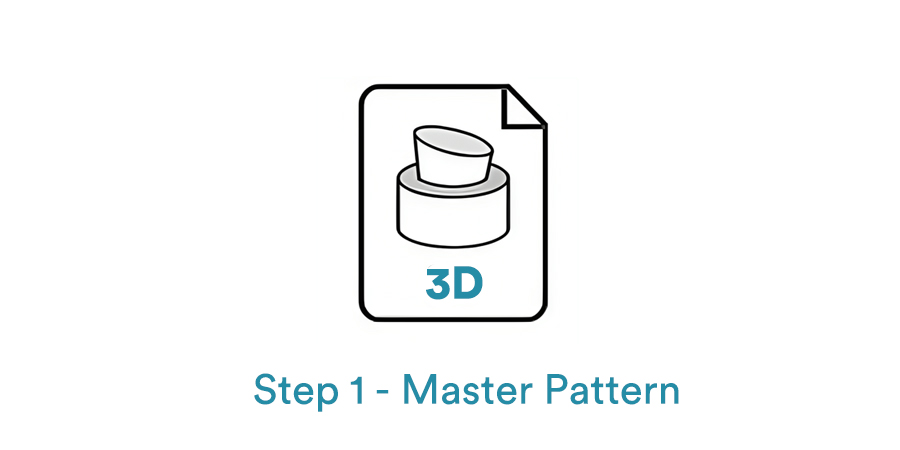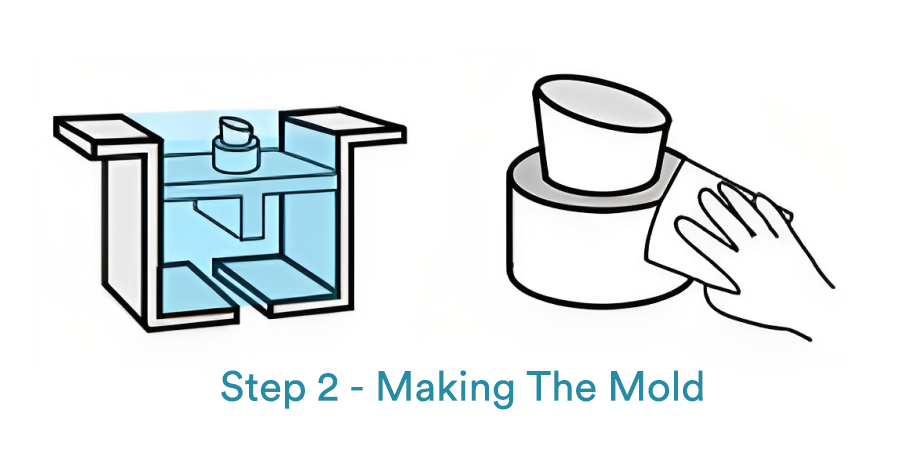Polyurethane and Silicone Vacuum Casting Services
Trusted vacuum casting solution for prototypes and low-volume production components at competitive prices.
- From 1 to 25 parts per mold
- Production grade quality
- 24/7 engineering support
- Global delivery

What is vacuum casting?
Vacuum casting or urethane casting or polyurethane and silicone vacuum spreading is a technology that incorporates silicone molds and a 3D printed master pattern to develop short-run, rigid parts with production-level top quality. The process solidifies polycarbonate polyurethane inside silicon or epoxy molds. The outcome is the vacuum cleaner spreading parts with the same shapes as the initial master models. The final measurements of the vacuum cleaner casting components will certainly depend upon the master version, part geometry, and the product chosen.
Vacuum Casting Advantages

Production Quality at Low Volumes
This process is a fast, cost-efficient method to generate 10-200 units with production-level quality. Generally, each silicone mold will certainly create 20 spreadings.

Complex Elastomeric Parts
Urethane spreading is excellent for prototyping elastomeric parts such as complex gaskets and over molds on rigid components.

High Level of Detail
Urethane spreading enables almost limitless intricacy, consisting of sharp inner edges unattainable with CNC machining, and styles without draft or consistent wall-thickness that can not be injection built.

Unmatched Lead Time
Up to 50 functional urethane components can be created in 10 to 15 days when you select vacuum cleaner casting.

Flexible Color Options
Integrate various shade pigments to accomplish the intended results on your finished products.

Wide Selection Materials
Casting materials range from soft and adaptable to rigid and impact-resistant, along with colored and clear.

Excellent Surface Finish
Urethane casting can supply much better surface structures compared with CNC prototyping or 3D printing.

Low Cost Molds
The silicone molds are fairly low-cost tooling compared to injection molds and are simple to make changes.
Vacuum Casting Materials

ABS-Like
Functional polyurethane plastic resin that is comparable to ABS thermoplastic. Difficult, rigid, and impact-resistant, it is suitable for various products.
All colors; precise pantone color matching available
Shore D 78-82
General purpose, product enclosures

PMMA-Like
PMMA-Like, acrylic-like, is a rigid, clear polyurethane plastic that simulates acrylic (PMMA). This product is excellent for transparent applications such as light pipes.
Clear Hardness: Shore D 87
Light pipes, see-through applications

PC-Like
Stiff, high-impact, and clear material with a wide variety of uses. Easy to device and finish, simulating polycarbonate.
Clear and various colors
Shore D 82-86
Light diffusers, signs, skylights, visors

PP-Like
Hard, adaptable, and abrasion-resistant urethane with inexpensive and polypropylene-like ductility.
Black or natural only
Enclosures, food containers, medical applications, toys

Rubber-Like
Polyurethane plastic resin, simulating rubber-like materials like TPU, TPE and silicone rubber.
All colors and precise Pantone color matchings
Shore A 20 to 90
Wearables, overmolds, gaskets

Silicon
Silicone is not just used for making devices in casting, however, it is also an exceptional material for components.
All colors and precise Pantone color matchings
medical devices, surgical models, kitchen accessories
Vacuum Casting Application

Low-Volume Production
Urethane cast parts are best for low-quantity production-- when volumes do not validate investment in shot mold tooling- in addition to for first-run manufacturing components, which can be completed weeks before manufacturing tooling is ready.

Advanced Prototyping
The urethane spreading process and fairly economical tooling make it simple and affordable to make any kind of essential style changes. Additionally, various products can be made use of with the same mold, making it possible to evaluate designs with a selection of materials.

Market Testing
End-user functionality and a top-notch coating make urethane cast parts perfect for consumer screening, individual assessment, and principle designs. Utilizing the parts urethane process indicates that changes can be included swiftly for either further testing or market launch.
Vacuum Casting Process
Step 1: The Master Pattern
Patterns are 3D solids of your CAD layouts. They are usually made either by CNC machining or some form of 3D printing such as SLA. Note, nonetheless, that a pattern made from 3D printing will certainly not be quite the like the CNC counterpart, since the later procedure makes use of rounded cutting tools that can not make very limited span edges.

Step 2:Making the Molds
Casting molds are made from liquid silicone. This silicone is poured around the master pattern inside of a casting box, and after that permitted to be treated in an oven for 16 hours. As soon as dried out, the mold and mildew are reduced and the master is eliminated, leaving behind an empty cavity in the specific negative shape of the initial.

Step 3:Casting Copies
Your selection of casting resins can currently be poured into the empty cavity to create an extremely exact copy of the original. It’s also possible to over-mold with 2 or even more products. Silicone molds are typically great for 20 or so duplicates of the master pattern.


